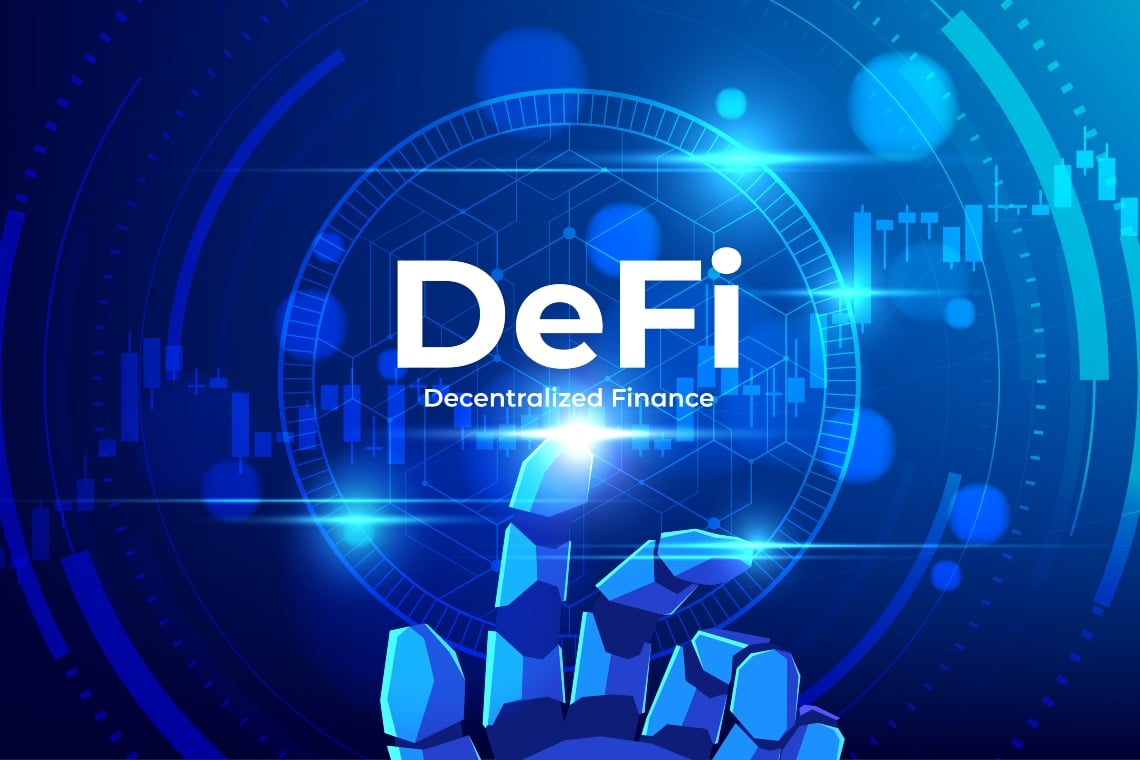In the midst of the roaring Bitcoin rally, analysts at Bernstein predict a significant resurgence of the decentralized finance (DeFi) sector, which is expected to lead the charge in the next phase of cryptocurrency market evolution.
The rebirth of DeFi thanks to the Bitcoin rally
As Bitcoin approaches its all-time highs, analysts predict a “big bang” recovery for the DeFi, which will mark a crucial moment for the decentralized finance niche.
While the surge in the price of Bitcoin has been largely attributed to the influx of exchange-traded funds (ETF), Bernstein analysts Gautam Chhugani and Mahika Sapra predict a broader market recovery, with DeFi at the center stage.
They underline that during the last cycle, the DeFi segment experienced a tumultuous period characterized by unsustainable returns fueled by token incentives. However, this unsustainable growth led to a collapse, exemplified by the collapse of the Terra ecosystem in May 2022.
The collapse of the Earth ecosystem has wiped out a whopping $40 billion of investors’ wealth in just a few days, reminding of the risks associated with speculative fervor. Chhugani and Sapra argue that this time DeFi’s performance is more sustainable, anchored to the value generated by the underlying applications.
They point to examples like Uniswap, which has proposed a fee-sharing mechanism for UNI token stakers, potentially turning the token into a profitable asset with a yield derived from protocol fees.
Uniswap, the largest decentralized exchange for spot trading, has generated a significant trading volume, surpassing even centralized exchanges like Coinbase. With the proposed fee sharing mechanism, Uniswap could pave the way for other DeFi protocols to adopt similar models, solidifying the sector’s position in the market.
However, concerns related to regulatory challenges loom large, especially regarding
concerns the classification of cryptocurrencies as securities. The Securities and Exchange Commission (SEC) has suggested that most cryptocurrencies, excluding Bitcoin, may fall into the category of securities.
The continuous evolution of the regulatory landscape related to DeFi
This regulatory uncertainty represents a significant risk for the DeFi sector, which is navigating a constantly evolving legal landscape.
Despite regulatory obstacles, Bernstein remains optimistic about DeFi, allocating a significant portion of its digital asset portfolio to the sector. The company has seen a 15% increase in DeFi allocation year over year, highlighting confidence in its long-term potential.
Indeed, the numbers reflect a growing interest in DeFi, with the total value locked in the sector seeing a significant 50% increase since the beginning of the year. From 60 billion dollars to over 97 billion, the growth trajectory of DeFi signals a renewed appetite from investors for decentralized financial solutions.
While Bitcoin continues its upward trajectory, paving the way for renewed interest in the broader cryptocurrency market, DeFi is poised for a major comeback.
With sustainable yields and innovative protocols guiding its resurgence, DeFi could emerge as a determining force in the next phase of cryptocurrency market evolution, leading the charge towards a decentralized financial future.
This resurgence of DeFi is not just a speculative bubble, but a fundamental shift towards a sustainable financial infrastructure. Unlike the previous cycle, where DeFi projects heavily relied on token incentives and speculative trading, today’s DeFi protocols are built on solid foundations, generating value through real-world utility and user activity.
The factors driving DeFi growth beyond Bitcoin
One of the key factors driving the growth of DeFi is the democratization of financial services. DeFi protocols offer a wide range of financial products and services, including lending, borrowing, trading, and asset management, accessible to anyone with an internet connection and a cryptocurrency wallet. This accessibility breaks down traditional entry barriers, allowing individuals from around the world to participate in the global financial system.
Furthermore, DeFi eliminates the need for intermediaries, such as banks and financial institutions, reducing costs and increasing efficiency. Smart contracts, powered by blockchain technology, automate the execution of financial agreements, eliminating the need for manual interventions and streamlining processes. This automation reduces the risk of human error and fraud, improving the overall security and reliability of DeFi platforms.
Another driving force of the renaissance is the ongoing innovation in the sector. Developers constantly push the boundaries of what is possible, creating new protocols and applications that meet the needs and challenges of the real world.
From decentralized exchanges to yield farming platforms to protocols for synthetic assets, DeFi offers a wide range of innovative solutions that meet the diverse needs of users.
Furthermore, the rise of Decentralized Autonomous Organizations (DAOs) is transforming the landscape of project governance. DAOs allow token holders to participate in the decision-making process, enabling community-driven governance models that promote transparency and decentralization.
This shift towards decentralized governance is in line with the fundamental principles of DeFi, which allows users to have a say in the future direction of the platforms they use.
Conclusion
In conclusion, the resurgence of DeFi amidst the Bitcoin rally represents a significant milestone in the evolution of the cryptocurrency market. With sustainable returns, innovative protocols, and a commitment to decentralization, DeFi is ready to lead the charge towards a more inclusive, efficient, and transparent financial system.
Although challenges remain, the fundamental shift towards decentralized finance is undeniable and paves the way for a future where financial services are accessible to all, regardless of geography or socioeconomic status.




